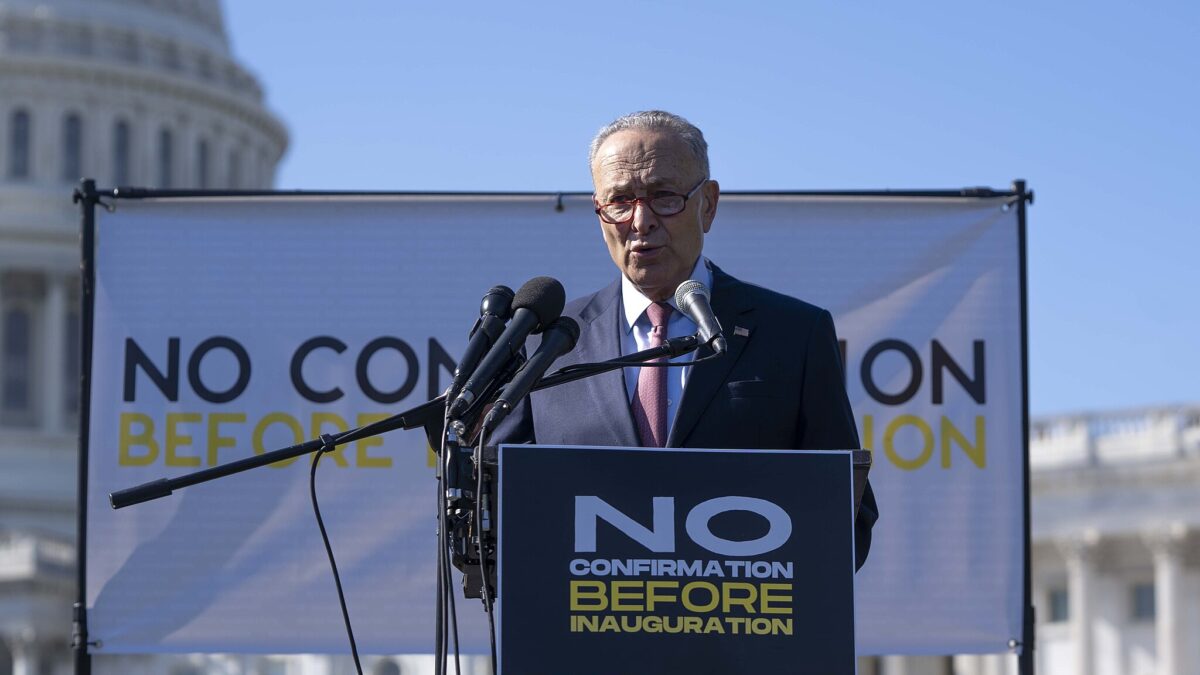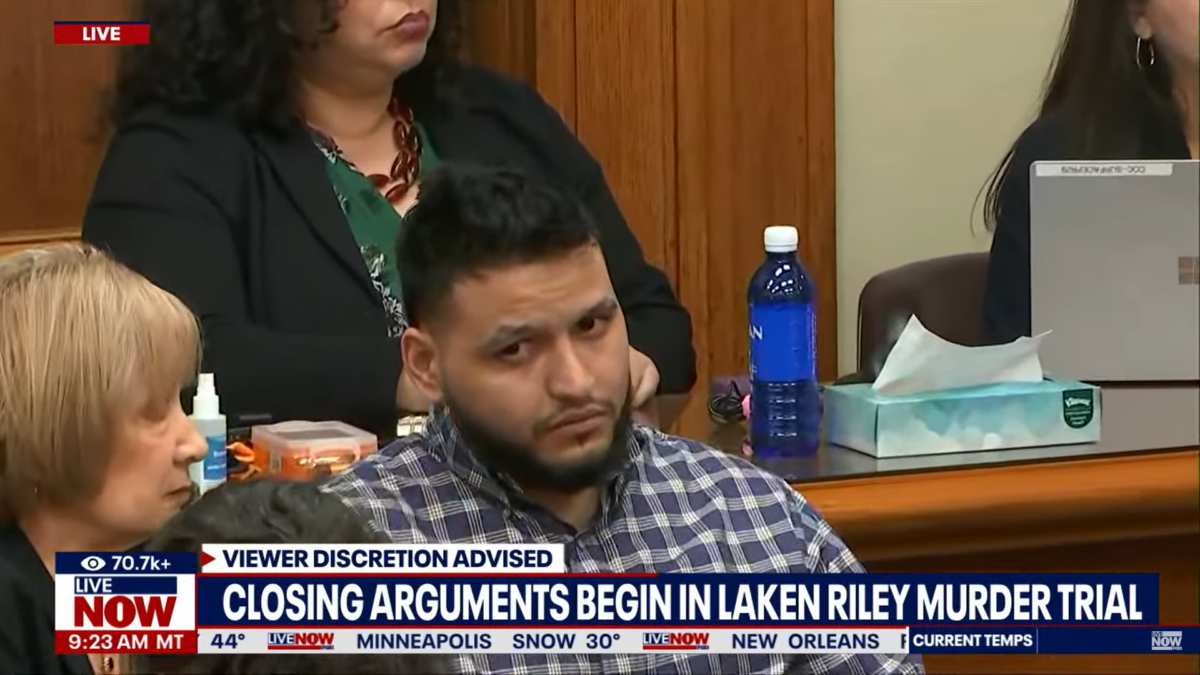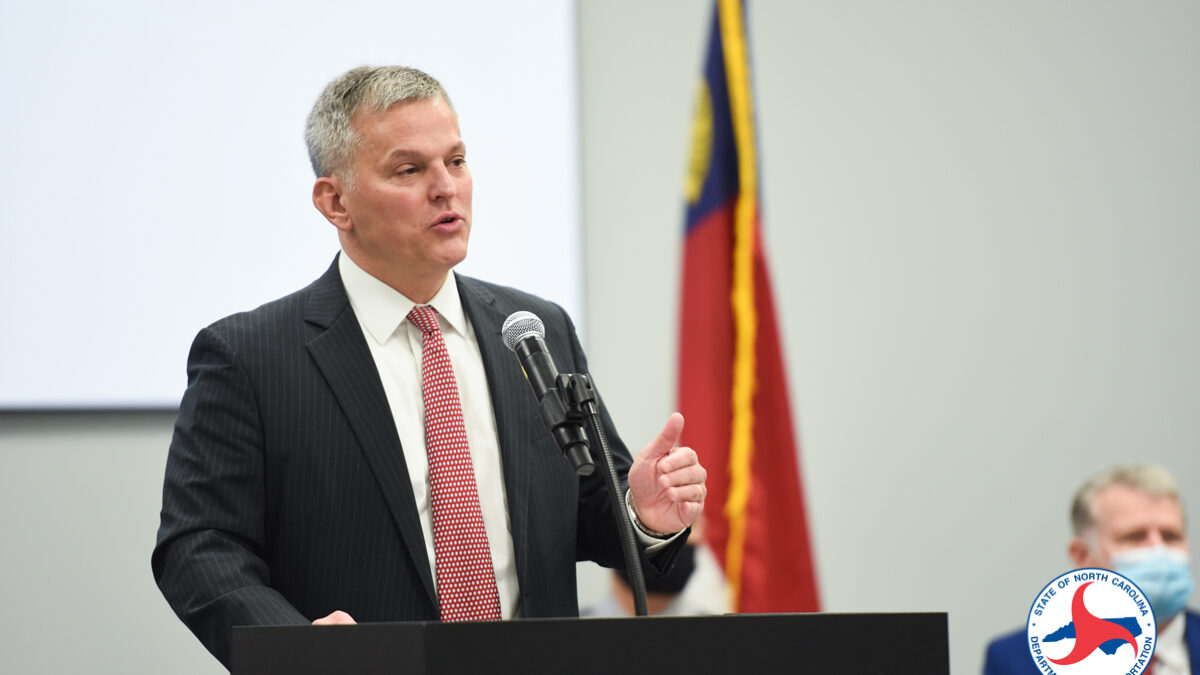
Refusing to pretend that a man is a woman is not sex stereotyping. It is not invidious discrimination. And it is not cruel bigotry. It is defending reality from a cultural onslaught destined to destroy parental rights, religious liberty, and freedom of speech if left unchecked.
Yet, rather than rein in the transgender hysteria overtaking society, courts have wrongly concluded that refusing to affirm a transgender individual’s false claim that “I am a woman,” or “I am a man,” is illegal sex discrimination under Title VII and Title IX — the federal anti-discrimination laws.
Most recently, the Sixth Circuit Court of Appeals joined the frenzy, holding last week in EEOC v. R.G. & G.R. Harris Funeral Homes, Inc. that transgender individuals are protected by Title VII’s prohibition of “sex” discrimination and concluding, in effect, that an employer violates the federal anti-discrimination statute by refusing to affirm a transgender employee’s false sex.
A brief primer on federal employment law exposes the error sweeping the judicial system.
Both Title VII and Title IX prohibit sex discrimination. Title VII prohibits discrimination in employment “because of such individual’s sex,” while Title IX prohibits discrimination “on the basis of sex,” in educational programs or activities receiving federal funding. Given the similar statutory language, courts treat claims brought by employees under Title VII, and by students under Title IX, analogously.
The plain language of Title VII and Title IX prohibits sex discrimination — not discrimination on the basis of transgender status or gender identity. In contrast, several states’ anti-discrimination statutes include both sex and gender identity in their list of protected classes. For instance, in California it is an “unlawful employment practice” for employers to discriminate against their employees because of their “race, religious creed, color, national origin, ancestry, physical disability, mental disability, medical condition, genetic information, marital status, sex, gender, gender identity, gender expression, age, sexual orientation, or military and veteran status …”
Like California, Congress could, if it desired, amend the statutory language of the federal anti-discrimination statutes to similarly prohibit discrimination based on gender identity or transgender status. But it hasn’t.
Nonetheless, in the last few years several courts have held that discrimination against transgendered individuals violates Title VII and Title IX. The courts have done so, even while recognizing that the term “sex,” as used in Title VII and Title IX, “should be given a narrow, traditional interpretation” — which would exclude transsexuals — by misinterpreting and misapplying the Supreme Court’s 1989 decision in Price Waterhouse v. Hopkins.
The Hopkins case involved not a transgendered individual, but a woman named Ann Hopkins who had been denied partnership in one of the then Big-Six public accounting firms. Hopkins sued for sex discrimination, arguing that had she been a man, she would have received the promotion. In attempting to prove her sex discrimination claim, Hopkins highlighted the many stereotypical comments directed toward her candidacy: One partner called her “macho,” another believed she “overcompensated for being a woman,” a third partner suggested she take “a course at charm school,” while yet another “complimented” her for “matur[ing] from a tough-talking somewhat masculine hard-nosed [manager] to an authoritative, formidable, but much more appealing lady [partner] candidate.” But what the Court described as the “coup de grace” was Price Waterhouse’s advice that Hopkins “walk more femininely, talk more femininely, dress more femininely, wear make-up, have her hair styled, and wear jewelry.”
In concluding evidence of stereotyping could be considered in assessing whether Hopkins established sex discrimination, a four-justice plurality opinion declared: “We are beyond the day when an employer could evaluate employees by assuming or insisting that they matched the stereotype associated with their group, for in forbidding employers to discriminate against individuals because of their sex, Congress intended to strike at the entire spectrum of disparate treatment of men and women resulting from sex stereotypes.”
Based on this language, lower federal courts have crafted two legal theories to entitle transgender plaintiffs to recover for sex discrimination — in direct conflict with the plain language of Title VII and Title IX. First, and best represented by the Eleventh Circuit’s discussion in Glenn v. Brumby, and the Sixth Circuit’s more recent analysis in Harris Funeral Home, courts wrongly reason that “a person is defined as transgender precisely because of the perception that his or her behavior transgresses gender stereotypes,” and thus under Price Waterhouse “discrimination against a transgender individual because of her gender-nonconformity is sex discrimination.” Under this reasoning, “discrimination against transsexuals because they are transsexuals is literally discrimination because of sex.”
This analysis has two flaws — factual and legal. Factually, the transgender individuals involved in the cases were not “transgressing gender stereotypes” — they were purporting to be a sex which they were not and seeking to require their employers to affirm them as that false sex. Legally, contrary to the lower courts’ analysis, “discrimination against transsexuals because they are transsexuals” is not sex discrimination under Title VII (or Title IX), even with the judicial gloss Price Waterhouse added to the statutory language: In Price Waterhouse, after explaining that evidence of sex stereotyping could establish sex discrimination, the Court made clear that sex stereotyping in itself is not illegal. Rather, as the Court explained, the question remains whether the plaintiff established that sex played a part in the employment decision. If an employer discriminates against a transsexual because he is transsexual, sex plays no part in the employment decision — gender identity does.
That does not mean that an individual who is transgender cannot succeed on a sex discrimination claim under federal law. (And as mentioned above, several state statutes include gender identity or transgender status as protected classes). As the Eleventh Circuit in Glenn reasoned, “All persons, whether transgender or not, are protected from discrimination” and sex stereotyping could serve to prove discrimination on the basis of sex. But the discrimination must be sex discrimination and evidence of sex stereotyping must be sex stereotyping. It is not stereotyping to believe a man is a man and a woman is a woman.
It is not stereotyping to believe masculine pronouns are used for men and feminine pronouns are used for women. It is not stereotyping to require employees or students to use bathroom facilities appropriate for their actual sex. It is not stereotyping to believe that a man cannot become a woman, or a woman a man — it is reality. And in other contexts, courts have upheld dress codes that establish different, but equally restrictive, standards for men and women.
Properly understood, then, Title VII and Title IX should permit an employer (or school) to require transgender employees (or students) to comply with the dress code of their actual sex. In other words, saying boys cannot wear make-up and dresses is not sex stereotyping.
Yet, courts have pretended that sex is not scientific, but merely stereotypical, and have used this fallacy to concoct a second legal theory creating liability under Title VII and Title IX. Under this alternative theory, employers and schools are liable, not for discriminating against an individual because they are transgender, but for treating the transgender employee or student consistent with his or her true sex. The Seventh Circuit’s decision in Whitaker v. Kenosha Unified School Dist. illustrates this flawed approach.
In that case, Ash Whitaker, a female student suffering from gender dysphoria, cut her hair, began wearing more masculine clothing, and then told her teachers and classmates she was a boy and to refer to her with male pronouns. She also demanded access to the boys’ restroom facilities and when informed she could use the girl’s facilities or gender-neutral bathrooms, she sued under Title IX for sex discrimination.
The federal appellate court preliminarily concluded that the school violated Title IX’s prohibition on sex discrimination because “[a] policy that requires an individual to use a bathroom that does not conform with his or her gender identity punishes that individual for his or her gender non-conformity …” This analysis equates sex reality with sex stereotyping, and then concludes that it is sex discrimination to make decisions based on reality.
Unfortunately, this distorted view is not isolated — yet another court claimed that “a woman with male genitalia” or “a man with stereotypically female anatomy, such as breasts,” merely has a nonconforming trait. The court in Harris Funeral Homes pushed a similar fallacy, declaring “an employer cannot discriminate on the basis of transgender status without imposing its stereotypical notions of how sexual organs and gender identity ought to align.”
Other courts, though, have taken the more reasoned approach that “There is a huge difference between a woman who does not behave as femininely as her employer thinks she should, and a man who is attempting to change his sex and appearance to be a woman.” And that it “is not just a matter of an employee of one sex exhibiting characteristics associated with the opposite sex. This is a matter of a person of one sex assuming the role of a person of the opposite sex.”
While there could be some difficult line-drawing needed in some cases, Whitaker isn’t one of them. Ash didn’t merely cut her hair and dress more masculine — she demanded complete affirmation and then sued when the school denied her access to the boy’s bathroom. That should be an easy case, but unfortunately it is not in our politically-charged judicial system.
Whether the Supreme Court will follow suit or return some semblance of sanity to the schools remains to be seen. But it will be some time before we know whether reality or wishful thinking will guide the high-court’s analysis because, while the Kenosha School District filed an appeal with the Supreme Court in the Whitaker case, lawyers settled the case before the justices entered the fray, leaving the issue for resolution to another day. That day may come soon, though, following the Sixth Circuit’s decision last week in Harris Funeral Home, again teeing up the issue.









